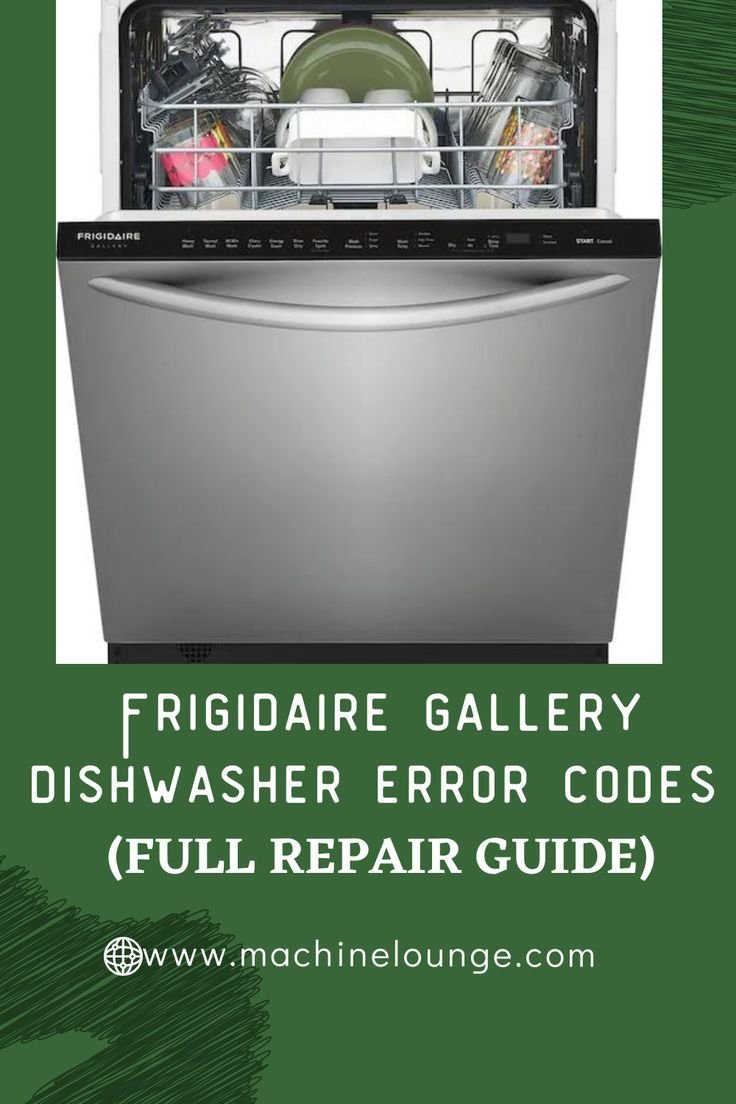
The Error Code OE is essentially your dishwasher’s cry for help, and it’s crucial to understand what it means to maintain the health of your kitchen companion. While it might seem daunting at first, knowing when to tackle the issue yourself and when to call a technician is key. You don’t want to ignore this warning sign; just like you wouldn’t ignore a continuously dripping faucet. Addressing it promptly can save you from bigger headaches down the road and keep your dishwasher running smoothly.
Understanding Error Code OE
So, what exactly is Error Code OE? In layman’s terms, this code pops up when your dishwasher struggles to drain water out properly. Picture a bathtub filled with water, and when you remove the plug, the water should flow out seamlessly. Similarly, your dishwasher needs to drain the leftover water after a cycle. If it can’t, the machine senses something’s amiss, showing you the Error Code OE on its display.
Now, why does this happen? A few usual suspects could be a blocked drain hose, a clogged filter, or even a faulty pump. When a dishwasher can’t drain the water, it might be due to a kink or clog in the drainage system, akin to a garden hose bent too sharply. Sometimes, food scraps get trapped in places they shouldn’t, creating blockages. In other instances, the drain pump might be failing, much like a tired heart that can’t pump blood effectively.
Recognizing these signs early on can help you avoid further complications. If you attempt a dishwashing cycle and it pauses halfway, be sure to check for this code. Just like a car dashboard alert, it’s a warning sign: heed it before it turns into a more significant issue. Understanding this error paves the way to deciding your next steps—whether it’s a minor fix or a call to a professional.
Common Causes of Error Code OE
Let’s dive deeper into what might be causing this error. More often than not, the problem lies with something simple that you can check yourself. The first thing to consider is the drain hose. If the hose is kinked or blocked, water can’t escape, leading to the error code. Imagine a straw pinched in the middle—no matter how hard you try, liquid won’t pass through until the blockage is cleared.
Another common cause might be a clogged dishwasher filter. This filter catches food particles and debris, preventing them from entering and potentially damaging the machine’s internals. However, if not cleaned regularly, it can get clogged, halting water flow. Cleaning it is like cleaning a lint trap in a dryer—a necessary step to keep things running smoothly.
Lastly, a malfunctioning drain pump can be the culprit. This pump helps expel the water from the dishwasher, and if it’s not working correctly, drainage problems arise. If you’ve tried the above checks and the problem persists, the pump might be to blame. Think of it as a worn-out motor that struggles to start; it may require a professional’s expertise.
When to Solve It Yourself and When to Call a Technician
Here’s the deal: some issues with the Error Code OE are simple fixes you can handle, while others might need a little more technical know-how. If it’s just a kinked drain hose or a clogged filter, these are straightforward to address. Straighten the hose or give the filter a good clean, and you might just fix the problem without breaking a sweat. It’s like fixing a simple household leak—you don’t need to be a plumber to do it!
However, not all problems are DIY-friendly. If you’ve checked for clogs and kinks and the error persists, it might be time to call in the pros. If the dishwasher isn’t draining despite your best efforts, the issue could be electrical or mechanical, like a broken pump. A technician can diagnose and fix problems effectively, armed with the right tools and expertise.
So, how do you decide? It boils down to comfort and capability. If you’re comfortable exploring the basic causes and making simple adjustments, give it a shot. But if you feel out of your depth or the fixes don’t solve the issue, don’t hesitate to contact a technician. It’s always better to have a functioning dishwasher than to risk further damage with a DIY mishap.
Preventative Measures and Final Thoughts
Prevention is better than cure, and that adage holds true for your dishwasher too! Regular maintenance can significantly reduce the likelihood of encountering the Error Code OE. Consider cleaning your dishwasher’s filter monthly, especially if you use it frequently. It’s a quick task that can prevent blockages, much like changing your car’s oil to keep it running smoothly.
Inspecting your drain hose periodically is also wise. Ensuring it’s free from kinks and blockages can go a long way in preventing drainage issues. You might also run an empty cycle with a bit of vinegar to clear out any built-up residue inside the machine, akin to giving it a refreshing cleanse.
In conclusion, while encountering Error Code OE on your Frigidaire dishwasher can seem like a hassle, understanding what it is and how to address it makes all the difference. Whether it’s a simple fix or a call to a trusted technician, understanding your appliance’s needs is key in keeping it happy and functional. With a bit of knowledge and routine maintenance, you’ll ensure your kitchen helper remains efficient and reliable for years to come.